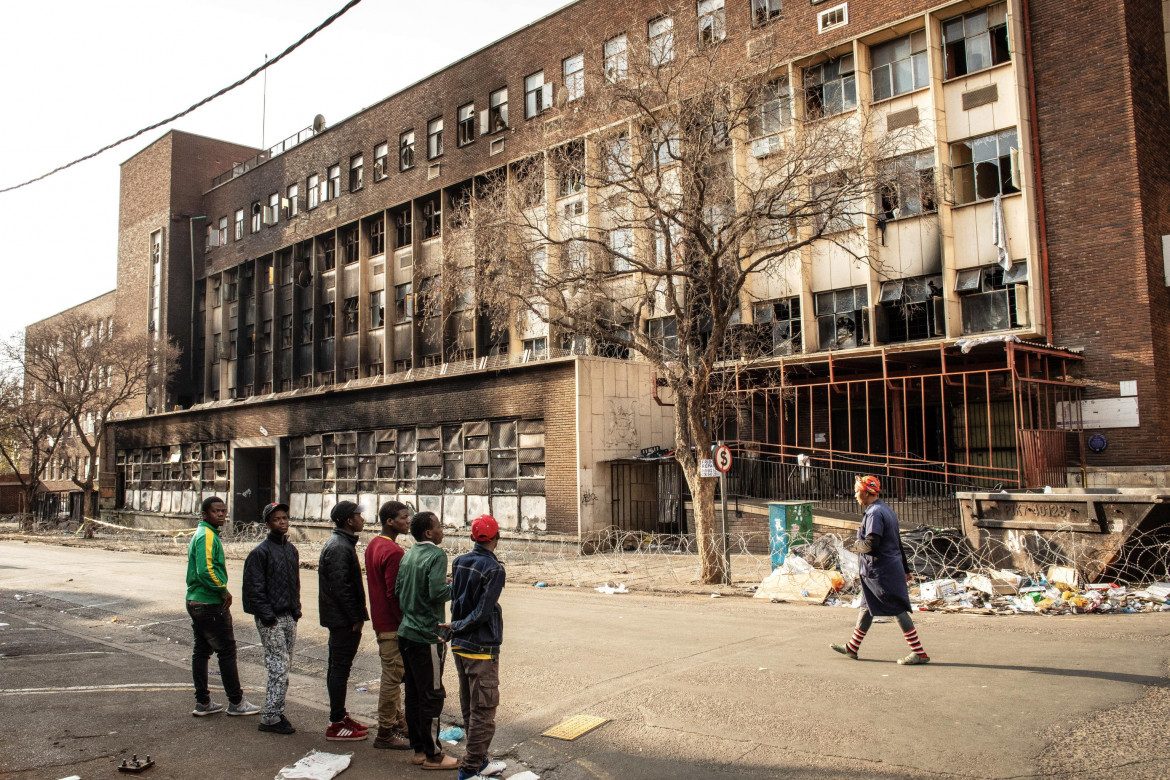Analysis
Apartheid by another name
The fire that occurred last week in a Johannesburg building killing 73 people is the result of decades of disastrous housing policies and the criminalization of poverty in South Africa.

The Johannesburg fire last week is reminiscent of the Grenfell Tower fire in London in June 2017. Seventy-three died in Johannesburg, 72 in London. The empire and the colony, which had managed to preserve, under the legal form of apartheid, what Walter Mignolo calls “coloniality”: the logic of colonialism that survives even after its official demise. In earlier times, South Africa was a glaring example of how it never actually went away; nowadays, the same could be said about the French African Financial Community (CFA) regime, as recounted in Katy Léna Ndiaye’s film Money Freedom (2023).
South Africa is one of the richest countries on the African continent. The country is host to the (private) hospitals where the African political and business class comes for treatment, from all parts of the continent. Until some years ago, just a short distance from the burned building, in Johannesburg’s CBD (Central Business District), the “vibrant” urban experience of Maboneng was being promoted for young creative professionals, both black and white. The city regeneration project, synonymous with gentrification, eventually achieved the exact opposite of its goal: the gentrifiers, those who had never even dreamed of living near the center, left. The buildings are now abandoned, likely destined to be occupied by squatters.
The Johannesburg CBD was abandoned in ’94, with the end of apartheid, after black citizens came in who previously needed a passport to be allowed access. The municipality had created a new center: Sandton, a shopping mall with mixed-use (residential and commercial) where a giant statue of Nelson Mandela welcomes with open arms everyone with a credit card: both blacks and whites, as a result of the BEE (Black Empowerment Economy), a policy with laudable intentions – to facilitate wider participation by blacks in the country’s entrepreneurial economy – which fostered the rise of a black elite, already partly present in latent form, as described in Patrick Bond’s book Élite Transition.
Addressing the tragedy of six days ago, Johannesburg Mayor Kabelo Gwamanda (from the Al Jama-ah party) and Lebogang Maile (ANC), head of human settlements and infrastructure, did not fail to heavily emphasize the dereliction and criminality found in what are called “hijacked buildings”: i.e., occupied properties. To note, Al Jama-ah is a Muslim fundamentalist party that the ANC and Effhanno have elevated to the leadership of Johannesburg as part of a coalition agreement established in order to secure control of the city against the opposing party, the Democratic Alliance (DA).
These “hijacked buildings” – depicted in fictionalized form in Ralph Ziman’s Jerusalema (2008) – are occupied buildings where the illegality doesn’t come from the occupation itself: given the absence of a housing policy worthy of the name, people will occupy. But afterwards, criminal groups take over the buildings and subject the residents to extortion. This is the criminality, not the fact that people claim their right to housing by occupying abandoned buildings in central areas of the city, close to job opportunities. The exploitative practices of prostitution of women and girls, the rapes, the drug trade, the murders that happen in these places are ignored by the city authorities, unable both to respond to crime as well as to provide “adequate housing” for citizens, as explicitly required by Section 26 of the South African Constitution. Instead, they always bring out the rhetoric of criminalizing poverty.
There is nothing new or surprising here: the South African housing crisis is one of the worst legacies of apartheid racial discrimination. Attempts had been made to address it in ’94 with the Reconstruction and Development Program launched by Nelson Mandela’s government, but the program did not achieve its intended results, and in fact quite the opposite: many of the housing policies it ended up producing are nothing short of offensive to human dignity. Such as the Temporary Relocation Areas, set up to remove thousands of residents of “informal” areas during preparations for the 2010 World Cup, and where people still live nowadays, without basic services.
In the case of Johannesburg’s CBD, a book was published last year called The Blinded City by Matthew Wilhelm-Solomon, which deals with the development of this problem over the past decade in the South African city center.
The building that burned down last week was known as Usindiso and used to serve as a shelter for abused women and children until it was abandoned by the municipality, resulting in the building falling into disrepair until it became what representatives of the City of Joburg are calling “hijacked.” In response to the officials’ claims, the Socio-Economic Rights Institute (SERI) issued a statement denouncing the fact that “the Usindiso fire is an example of how the city handles its shelters. Laying the blame on NGOs, as those who speak for the city are currently doing, demonstrates the city’s unwillingness to take responsibility for the housing crisis in urban centers.”
Everywhere in the world, an effective housing policy requires a greater understanding of what affordable housing in urban centers entails, and how it relates to issues of poverty, poverty alleviation, and the creation of sustainable cities and communities. In contrast, we are increasingly seeing housing strategies based on speculation, a trend fully embraced in South Africa as well: it’s enough to look at the level of rents in the wealthy enclave of Cape Town, similar to those in Milan. Not surprisingly, it’s the favorite “habitat” of many Londoners for the Christmas vacations.
Originally published at https://ilmanifesto.it/lapartheid-resta-di-casa on 2023-09-06
